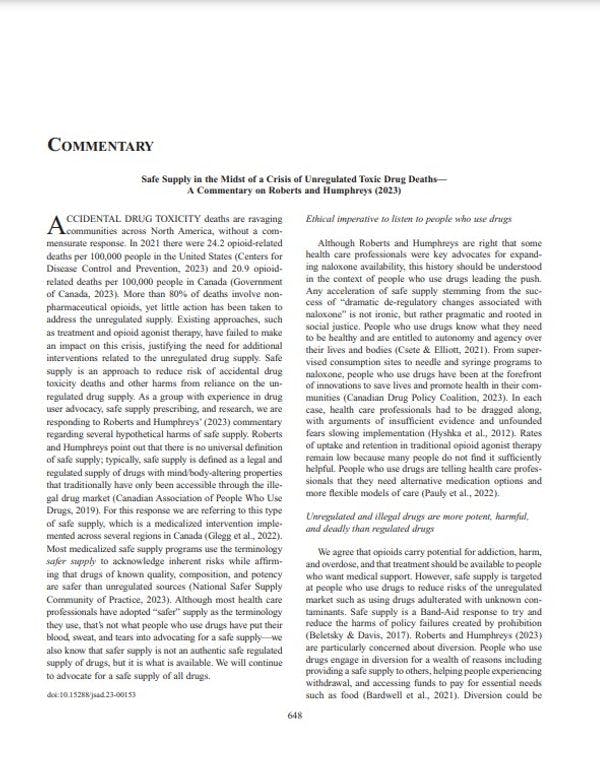Un approvisionnement sécurisé au milieu d'une crise de décès liés à des drogues toxiques non régulées - un commentaire concernant la critique émise par Roberts et Humphreys
Bonn et al. répondent aux critiques du modèle d'approvisionnement sécurisé, en soulignant l'importance de l'approvisionnement sécurisé pour réduire les décès accidentels liés à la toxicité des drogues et pour améliorer la santé et le bien-être des personnes qui font usage de drogues. Pour en savoir plus, en anglais, veuillez lire les informations ci-dessous.
Accidental drug toxicity deaths are ravaging communities across North America, without a commensurate response. In 2021 there were 24.2 opioid-related deaths per 100,000 people in the United States (Centers for Disease Control and Prevention, 2023) and 20.9 opioidrelated deaths per 100,000 people in Canada (Government of Canada, 2023). More than 80% of deaths involve nonpharmaceutical opioids, yet little action has been taken to address the unregulated supply.
Existing approaches, such as treatment and opioid agonist therapy, have failed to make an impact on this crisis, justifying the need for additional interventions related to the unregulated drug supply. Safe supply is an approach to reduce risk of accidental drug toxicity deaths and other harms from reliance on the unregulated drug supply.
As a group with experience in drug user advocacy, safe supply prescribing, and research, we are responding to Roberts and Humphreys’ (2023) commentary regarding several hypothetical harms of safe supply. Roberts and Humphreys point out that there is no universal definition of safe supply; typically, safe supply is defined as a legal and regulated supply of drugs with mind/body-altering properties that traditionally have only been accessible through the illegal drug market (Canadian Association of People Who Use Drugs, 2019). For this response we are referring to this type of safe supply, which is a medicalized intervention implemented across several regions in Canada (Glegg et al., 2022).
Most medicalized safe supply programs use the terminology safer supply to acknowledge inherent risks while affirming that drugs of known quality, composition, and potency are safer than unregulated sources (National Safer Supply Community of Practice, 2023). Although most health care professionals have adopted “safer” supply as the terminology they use, that's not what people who use drugs have put their blood, sweat, and tears into advocating for a safe supply—we also know that safer supply is not an authentic safe regulated supply of drugs, but it is what is available. We will continue to advocate for a safe supply of all drugs.
